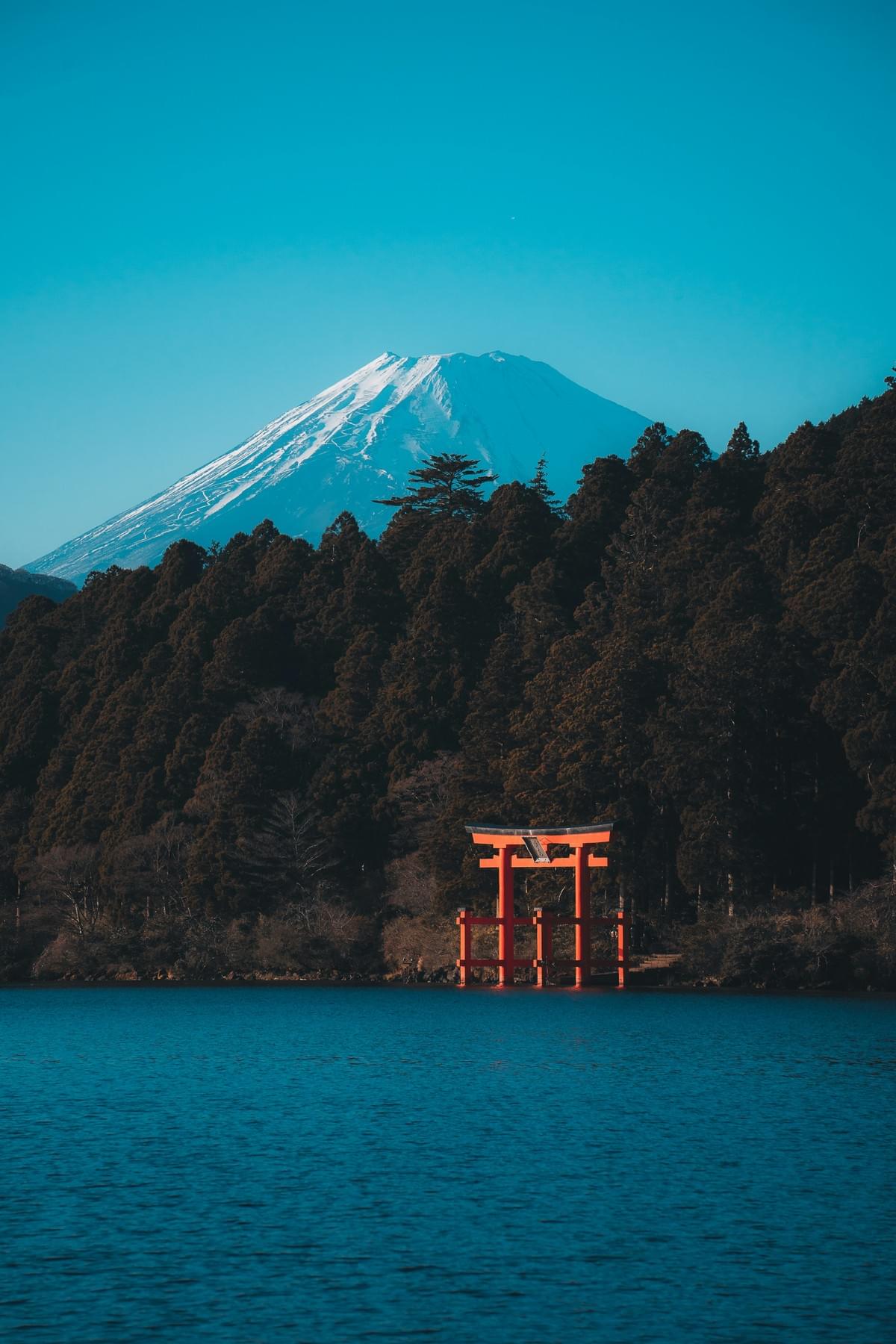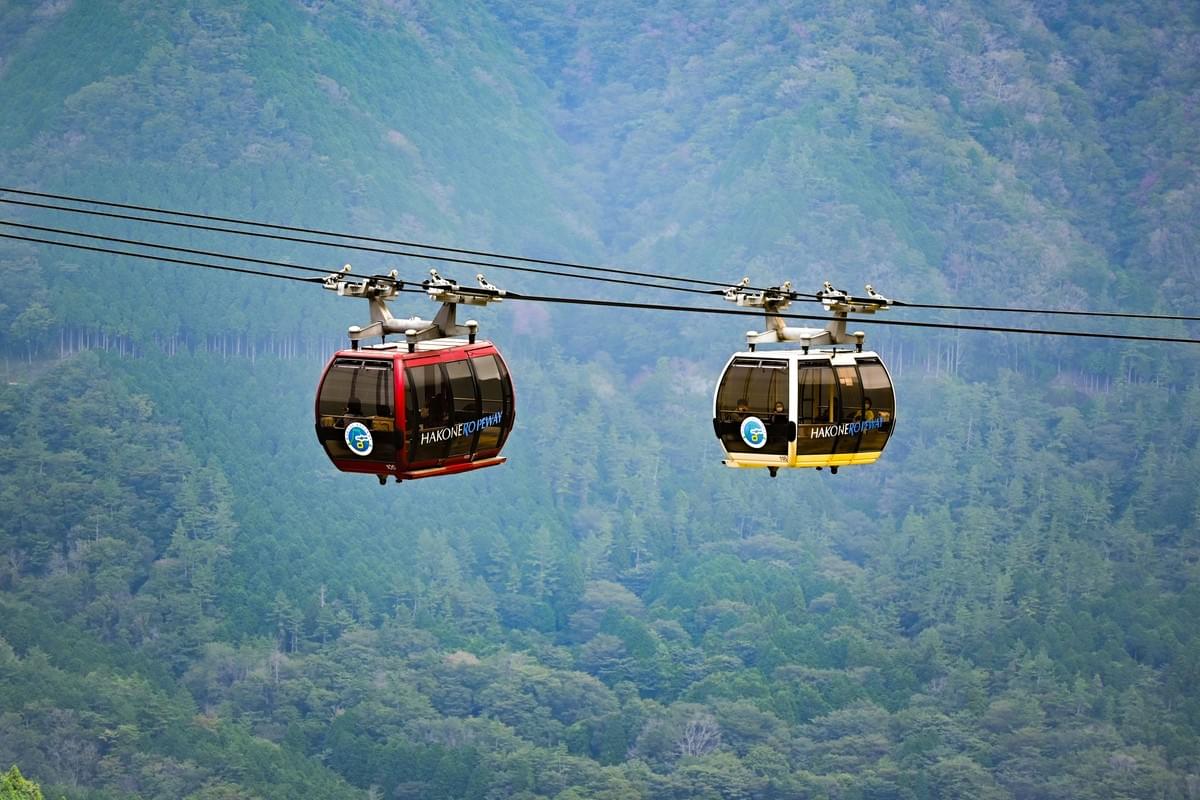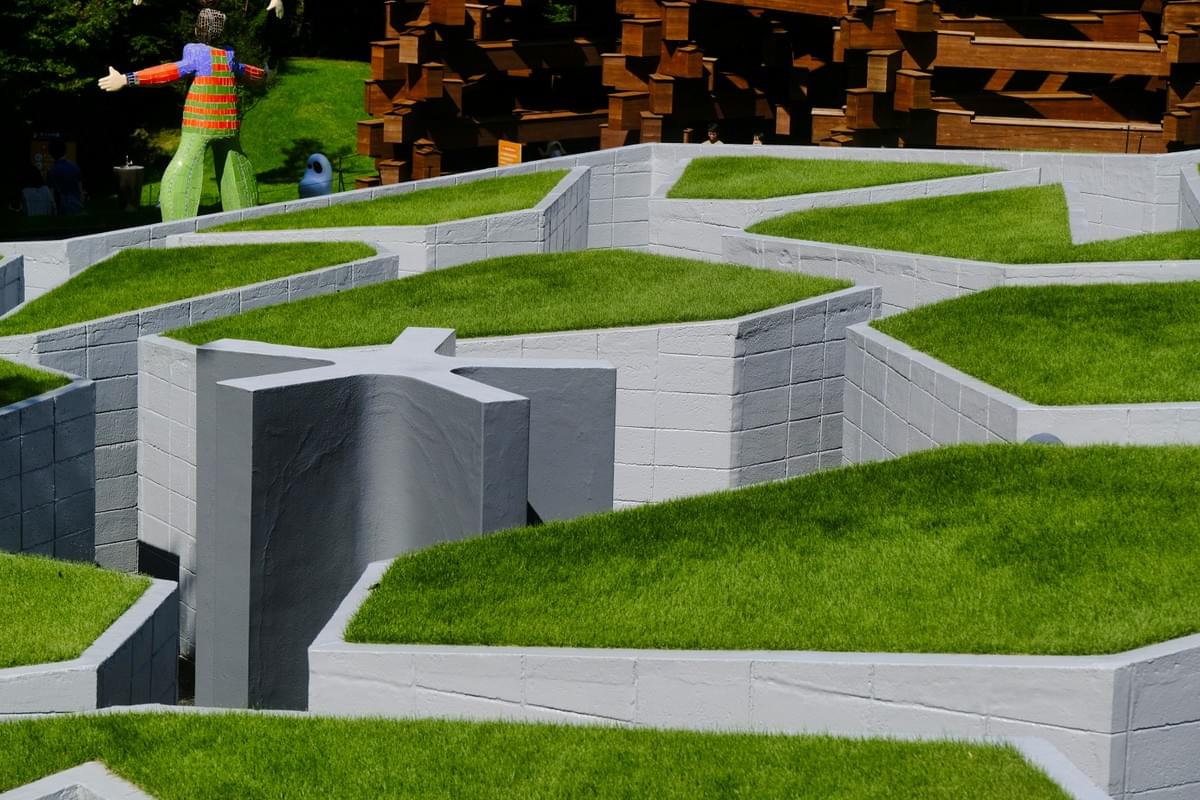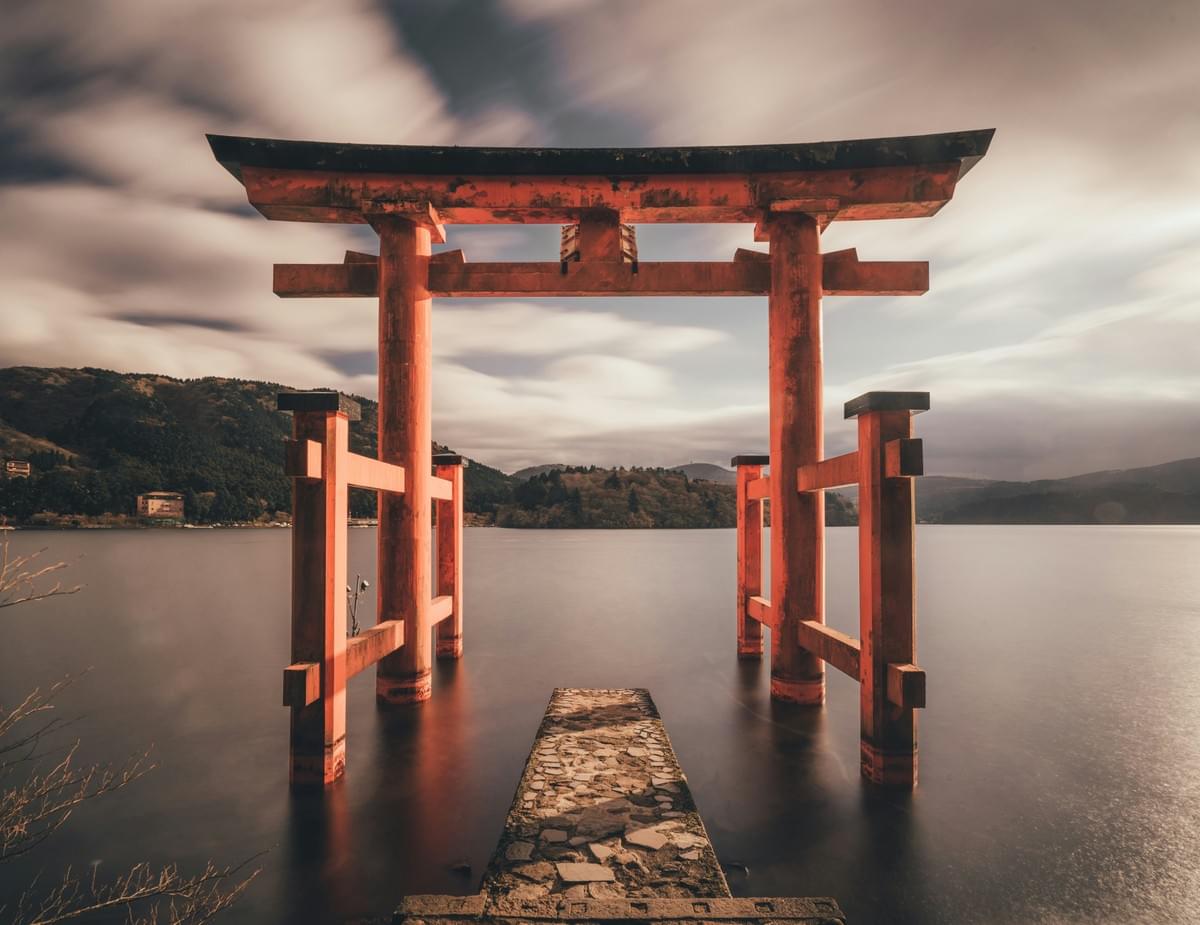Hakone (pronounced Hah-cone-ay) is a rural town close to Mt Fuji with natural hot springs, or onsen. Located less than an hour from Tokyo, Hakone is a popular hot springs destination for both locals and visitors. In this area, you can view Mt Fuji from across Lake Ashi (weather permitting!), soak in the onsen, and enjoy natural beauty as well as numerous art galleries.

Why should I visit Hakone?
Hakone is probably the most obvious choice for a ryokan stay in Japan (more about ryokan, or traditional hot spring inns, on this post). As you would expect, this area is popular and busy! However, for those with limited time in their schedule, and those with dietary restrictions or food allergies, Hakone can be a great option.
Pros of Visiting Hakone
- Easily accessible from Tokyo, and on the way between Tokyo and Kyoto
- Once you arrive at Gora Station, it's pretty hard to get lost! There are signs and plenty of people to follow around the sightseeing loop.
- If the weather is clear, this is a great place to see Mt Fuji
- As Hakone welcomes many inbound tourists, lots of English is spoken in this area. For those staying overnight, many ryokans in the area are able to accommodate different dietary restrictions such as vegetarian and gluten-free.
Cons of Visiting Hakone
- As this area is so well-known, it can be quite crowded on the main sightseeing loop. The torii gate with Mt Fuji views, for example, generally has a long queue for photos.
- If you’re looking for a more traditional ryokan experience, there are some amazing options in Hakone, but do be aware that there are lots of ryokan in this area that are not very traditional. This can be good or bad, but in this area many properties cater toward the tastes of inbound tourists with western-style beds, private onsen, and flexible meal options.
Transportation in Hakone
From Tokyo, it takes about 30 minutes by bullet train to arrive at Odawara Station. Inside the station, there is a great tourist information office with bus schedules for getting to and from the station into Hakone proper. From Odawara Station, you can get to Gora by taxi (about 40 minutes) or bus (about 50 minutes). Once you’re in Gora, you’ll be able to utilize the great network of trams, cable cars, and boats to navigate the Hakone area. I’d strongly recommend purchasing a Hakone Freepass which will allow for unlimited rides within the Hakone area.

What to do in Hakone
Hakone Round Course
Hakone does not need to be seen with a guide (most people don’t use a guide here) as there is a well-established sightseeing loop. From Gora Station, you can follow the loop as follows:
- Catch the Hakone Ropeway from Gora Station to Owakudani.
- Get off the ropeway in Owakudani (if you don’t mind the sulfur smell!) to see the steam pouring out of vents all along the valley. Most importantly, buy one of the black eggs which gets its colour from the sulfur and iron in the natural spring water in which the eggs are boiled. Eating a boiled egg from Owakudani is said to add 5 years to your life!
- From here, continue on the ropeway to Togendai Station, where you’ll transfer to the pirate ship for a sail across Lake Ashi to Hakonemachi-ko. Hopefully, you’ll be able to see some beautiful views of Mt Fuji from the lake! For lunch, there are plenty of restaurants along the port both where your boat departs and arrives.
- Near the arrival port across the lake, the Narukawa Art Museum, specializing in Japanese art, boasts a cafe with views across Lake Ashi.
- From here, it is about a 20 minute walk or 5 minute taxi ride to the iconic Hakone Shrine, and the torii gate sitting in Lake Ashi. Be prepared to queue here if you want a photo in front of the torii.
- After visiting Hakone Shrine, most visitors then take a bus back to the starting point to complete the loop. If you have time, I would strongly recommend continuing along the lakeshore to Hakone-en Station, where you can take a cable car to Hakone Mototsumiya Shrine, perched atop the hill and with stunning views (again, fingers crossed for a clear day!).
Art Museums in Hakone
In addition to the hot springs, Hakone is famous for its large number of art museums.
If the weather is good, you can’t do better than the Hakone Open-Air Museum. Wandering the beautiful grounds to discover sculptures is half the fun here! If you’d prefer to spend a bit of time indoors, the Pola Museum of Art, which focuses mainly on European art, is a great choice.
Another great option is the Narukawa Art Museum, specializing in Japanese art, which also boasts a cafe with views across Lake Ashi.

Hiking in Hakone
Hakone is also a great base for hiking. My top recommendation is the Lake Ashinoko West Bank Trail, an 11.5km trail that follows the banks of Lake Ashi. The trail is mostly wooded, but there are great views across the lake, and there are some more open and beachy stretches of trail.
Another shorter option is to hike along a section of the Old Tokaido Road, the Edo era route that connected Tokyo to Kyoto. This section, passing under ancient cedar trees, is especially beautiful. Please note that some sections of the route are cobbled, so walking can be slow.
Hakone as a Day Trip
Hakone can be done as a day trip from Tokyo. If you’re staying near Tokyo Station or Shinagawa Station, the easiest option will be to take the shinkansen, or bullet train, to Odawara Station. I’d recommend getting an early start from Tokyo Station so that you’ll have enough time to enjoy some of the museums in Hakone as most places close by 5pm. You don’t need to arrive on the shinkansen platform more than 5 minutes ahead of your train’s departure, but I would recommend getting to Tokyo Station 15-20 minutes early to give yourselves enough time to navigate the station and make your way to the correct platform.
If you’re staying in the Shinjuku or Shibuya area, you could get advance tickets on the Romance Car sightseeing train that runs from Shinjuku Station to Hakone Yumoto Station.
Navitime is a great resource for searching train times and routes.
Staying Overnight in Hakone
As I mentioned above, Hakone is a great place for an overnight stay, especially for guests with dietary restrictions, as many traditional properties who cater to Japanese guests are unable to make fully vegan or gluten-free meals. Moreover, if you prefer to have your own private onsen bath, most properties in Hakone have en-suite onsen or onsen that can be reserved privately by the hour.


